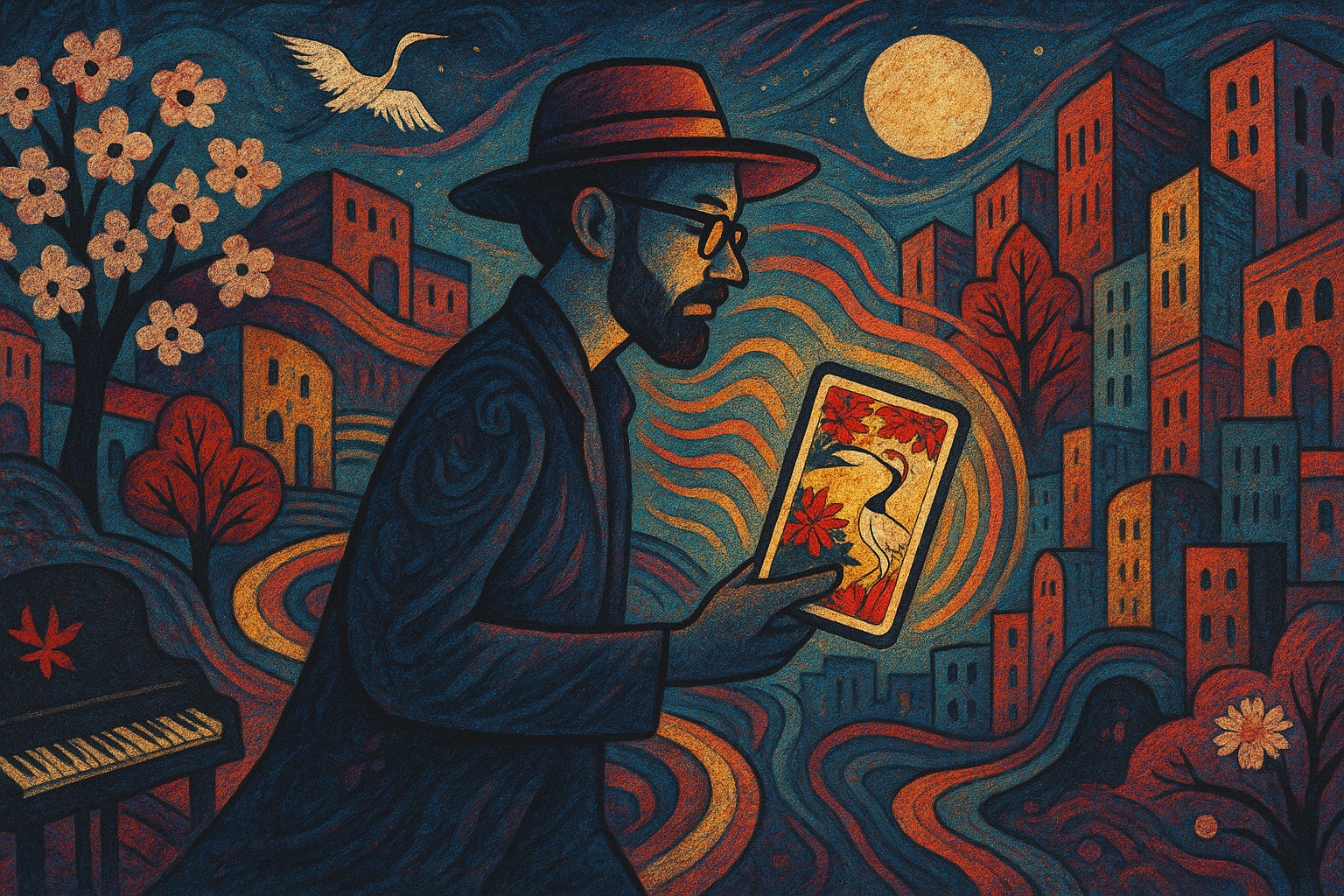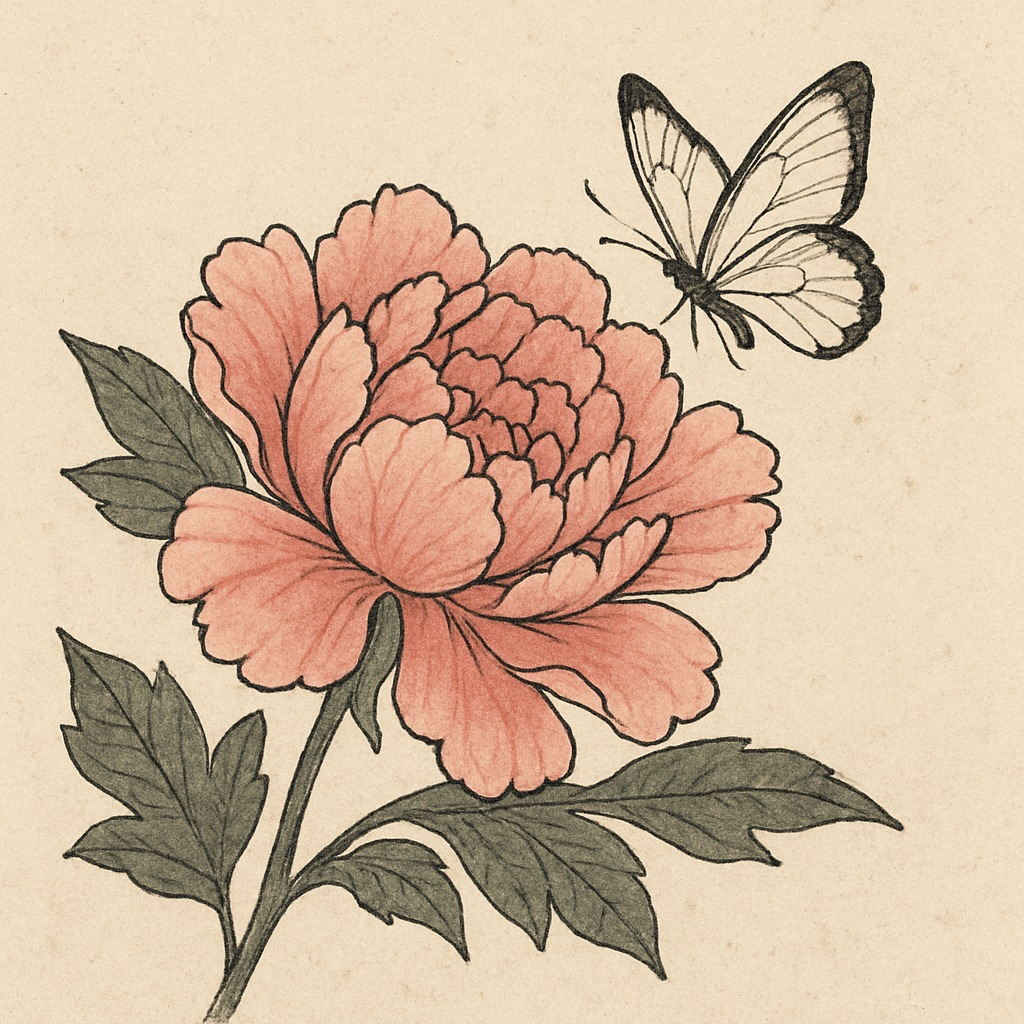Inner states as maps of the outer world

When we draw a Hanafuda card, we usually ask things like:
“What’s coming next?”
“Where’s my strength?”
“What am I missing?”
But what if the cards don’t want to answer? What if they’re just inviting us to see the world differently? What if every card isn’t a prediction — but a lens? A filter that adds new colors to everything around us?
This article looks at Hanafuda as a tool of psychogeography — the art of noticing how our emotions shape how we see cities, streets, rooms, or even the walk to the store. It’s not about the future. It’s about now. And the cards whisper: look again.
What Is Psychogeography?
The word comes from 20th-century France, from the radical group known as the Situationists, especially Guy Debord. They rejected the rigid design of cities — “you work here, live there, shop here” — and instead encouraged people to feel places emotionally and physically. One of their practices was the dérive — drifting without a destination. Letting your path be shaped by a wall’s color, a smell from a bakery, or your own mood.
Hanafuda fits beautifully into this idea. Instead of Google Maps — you draw a card. Instead of a plan — you follow your intuition.
Card as Route: A Different Kind of Walk
Let’s say you draw Irises and Bridge (May). In Japanese poetry, a bridge is always a moment of crossing — something temporary, a space between “before” and “after.” What if today is also a bridge? And walking from room to room becomes a kind of passage? What if going to the kitchen isn’t just routine — it’s a crossing?
Another example: Miscanthus Grass and Full Moon (August). This moon doesn’t guide you. It simply accompanies you. Its light is soft — like a breath at the end of summer. It doesn’t push. It reminds: you’re here, you’re breathing, you’re seeing.
If you draw this card, your day might become a quiet kind of gratitude. Your walk might be about noticing reflections and shadows: grass swaying by the road, a lamppost’s shadow, geese reflected in a puddle.
And Pine and Crane (January)? This card isn’t about movement — it’s about stillness, strength, and watching. Instead of walking, just stand by the window, like a crane in the snow. Don’t search. Just see.
Practice: The Wandering Observer
- Draw a card — not for answers, but as a guide.
- Ask: “If my day was a place, what would it be?”
- Walk your usual route (around your home, outside, to the store) as if you were the spirit of that card.
- Cherry blossom? A moment of brief beauty.
- Paulownia? A quiet ending.
- Chrysanthemum? A thoughtful late bloom.
- Notice how your attention shifts.
Where do your eyes linger?
What does your body respond to? - When you get back, write an image — not a conclusion.
Just a small scene:- “A puddle reflecting a maple leaf”
- “A rusty balcony with mint growing in a pot”
- “A lamppost shadow shaped like a crane”
That’s the card at work — not in what it means, but in how it helps you connect what’s inside with what’s around you.
Why It Matters
We often think of card work as a way to choose direction. But sometimes, we don’t need direction. We just need to see what’s already there.
Hanafuda is poetry made of images. Not a road map — but a meaning map.
And if we let it guide us — without a goal — it may not take us where things are “better,” but to where things are already real.
The world around us isn’t just background. It responds. It hums. And the card? It’s just a way to tune your ear to that hum.
#HanafudaJourney
#Psychogeography
#InnerMaps
#CardAsLens
#SeeDifferently


